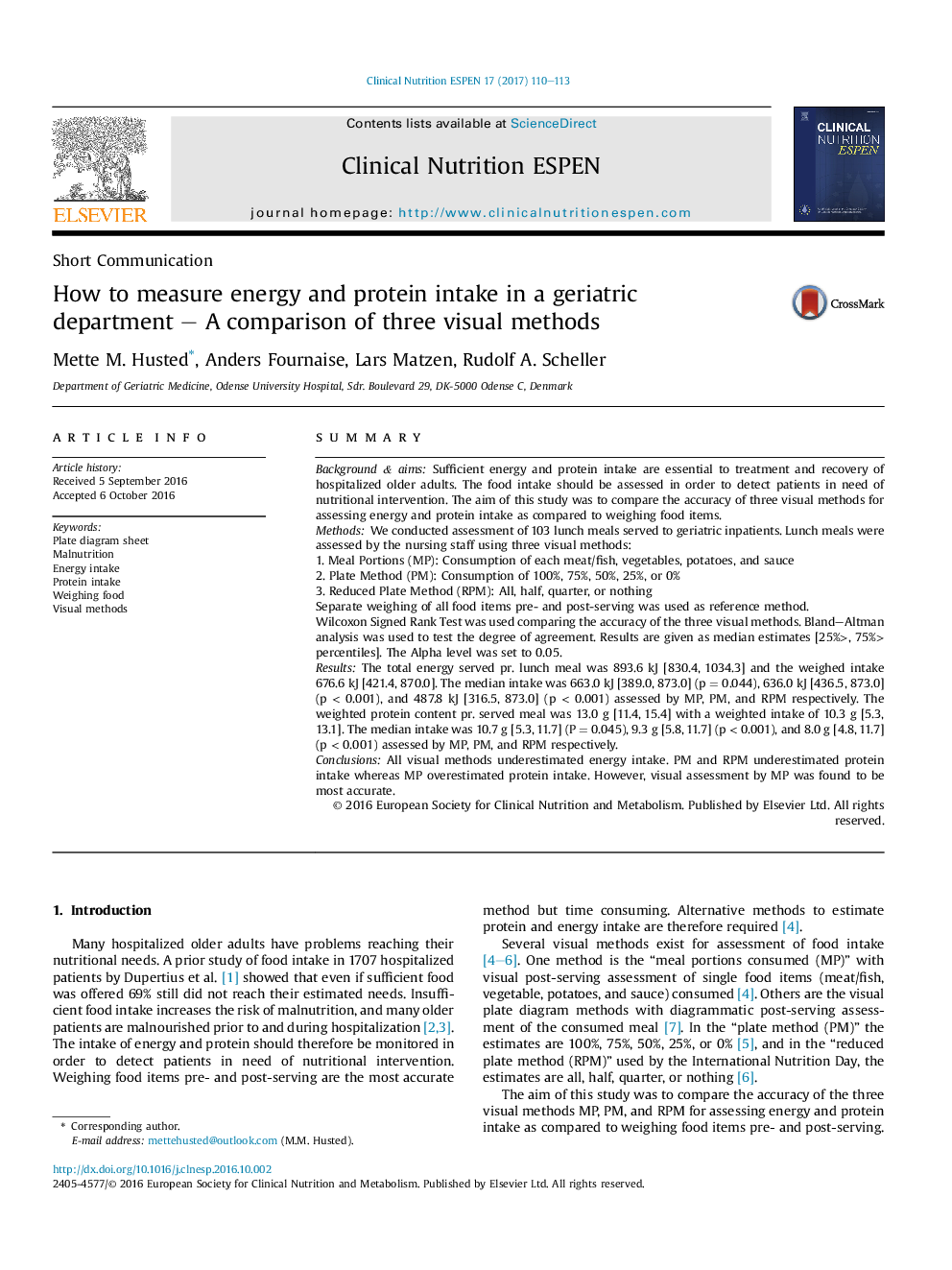| کد مقاله | کد نشریه | سال انتشار | مقاله انگلیسی | نسخه تمام متن |
|---|---|---|---|---|
| 5572597 | 1564722 | 2017 | 4 صفحه PDF | دانلود رایگان |
SummaryBackground & aimsSufficient energy and protein intake are essential to treatment and recovery of hospitalized older adults. The food intake should be assessed in order to detect patients in need of nutritional intervention. The aim of this study was to compare the accuracy of three visual methods for assessing energy and protein intake as compared to weighing food items.MethodsWe conducted assessment of 103 lunch meals served to geriatric inpatients. Lunch meals were assessed by the nursing staff using three visual methods:1. Meal Portions (MP): Consumption of each meat/fish, vegetables, potatoes, and sauce2. Plate Method (PM): Consumption of 100%, 75%, 50%, 25%, or 0%3. Reduced Plate Method (RPM): All, half, quarter, or nothingSeparate weighing of all food items pre- and post-serving was used as reference method.Wilcoxon Signed Rank Test was used comparing the accuracy of the three visual methods. Bland-Altman analysis was used to test the degree of agreement. Results are given as median estimates [25%>, 75%> percentiles]. The Alpha level was set to 0.05.ResultsThe total energy served pr. lunch meal was 893.6 kJ [830.4, 1034.3] and the weighed intake 676.6 kJ [421.4, 870.0]. The median intake was 663.0 kJ [389.0, 873.0] (p = 0.044), 636.0 kJ [436.5, 873.0] (p < 0.001), and 487.8 kJ [316.5, 873.0] (p < 0.001) assessed by MP, PM, and RPM respectively. The weighted protein content pr. served meal was 13.0 g [11.4, 15.4] with a weighted intake of 10.3 g [5.3, 13.1]. The median intake was 10.7 g [5.3, 11.7] (P = 0.045), 9.3 g [5.8, 11.7] (p < 0.001), and 8.0 g [4.8, 11.7] (p < 0.001) assessed by MP, PM, and RPM respectively.ConclusionsAll visual methods underestimated energy intake. PM and RPM underestimated protein intake whereas MP overestimated protein intake. However, visual assessment by MP was found to be most accurate.
Journal: Clinical Nutrition ESPEN - Volume 17, February 2017, Pages 110-113
